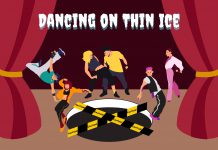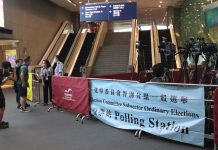“You have to wear something that is kind of unusual but at the same time not so distracting for the audience…Whenever we do flash mobs, we think about the people who are watching us or people who are joining us,” Asis explains. “The message should not be lost in the whole thing. The whole package should convey that message.”
Ultimately, for some, the biggest reward of flash mobs is being a part of a community. Jeffrey Tam is a member of HK Do What.com and the person in charge of the first-ever MP3 experimental flash mob held in Hong Kong, in which people played a pre-downloaded MP3 soundtrack at the Mong Kok pedestrian zone at 3.00 p.m. on March 3 and followed performance instructions on the soundtrack. Tam says one of the aims of the event was to show city dwellers that they are connected with other people by asking them to do things they would not normally do, like high-fiving other participants or passers-by.
“We want Hong Kong people to change their living styles; to be not so monotonous. We want Hong Kong people to step out of their comfort zones. We want people to start experiencing their life, to feel the connection between people in this city, to feel that we are not separate individuals in a city, but are more or less connected,” he says.
What had started out as an experiment to mock the pretentiousness of New York hipsters has morphed into something else. Flash mobs transcend many different and separate communities. Whether you are a participant or a member of the audience, you feel a sense of belonging to the event.
“When you think about money all the time, when you only think about yourself, that can be very individualistic or selfish,” says Asis. “But when you are with a group of people, you become part of a community. And you feel that there is more to life than you.”
Edited by Jennifer Lam






































